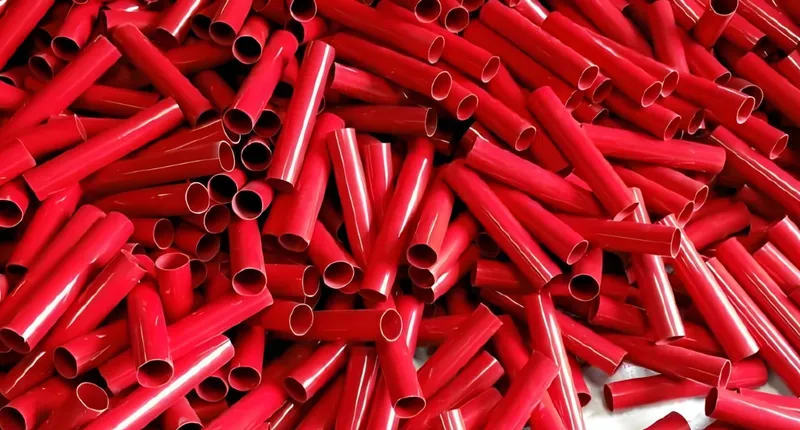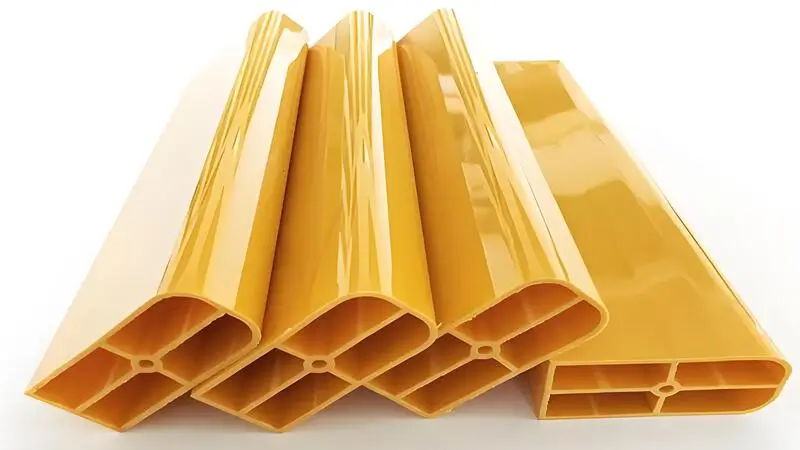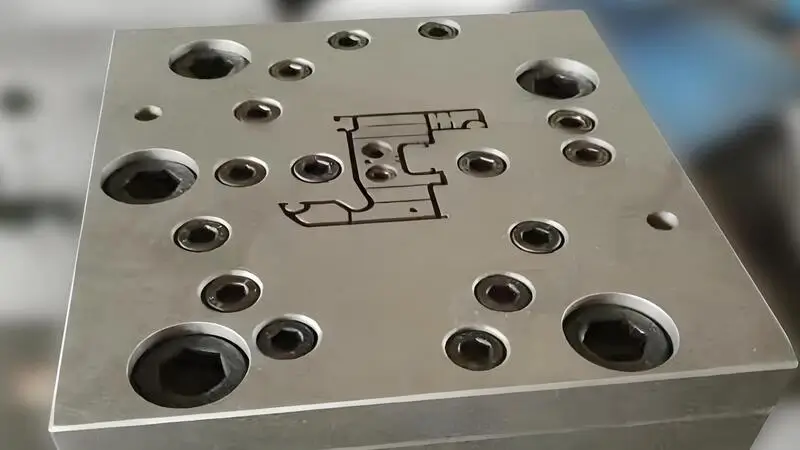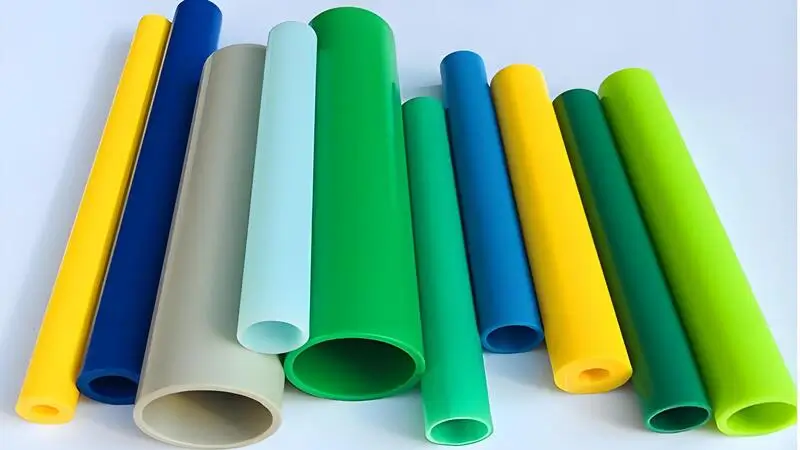
Managing the gloss level in extruded products is a critical aspect of manufacturing that balances aesthetic appeal with functional performance. From glossy automotive trim to matte packaging materials, gloss control influences how products are perceived and how they perform in real-world applications. This guide explores the essentials of gloss management in extrusion, covering definitions, influencing factors, technical processes, practical tools, and related technologies.
Gloss management in extruded products involves controlling surface shine through material selection, process parameters, and post-treatments, ensuring products meet aesthetic and functional requirements in industries like automotive, packaging, and construction.
Mastering gloss levels can enhance product quality and market competitiveness. Read on to discover how to achieve the perfect finish for your extruded products.
Gloss management is crucial for both aesthetic and functional properties in extruded products.True
Gloss affects not only the visual appeal but also properties like durability and ease of cleaning.
Gloss levels in extruded products are solely determined by the material used.False
While material selection is important, process parameters and post-treatments also significantly influence gloss.
- 1. What is Gloss and How is it Measured in Extruded Products?
- 2. What Factors Influence Gloss Levels in Extruded Products?
- 3. How Can You Control Gloss During the Extrusion Process?
- 4. What are the Applications Where Gloss Management is Critical?
- 5. How Does Extrusion Compare to Other Technologies for Gloss Management?
- 6. What Practical Tools Can Help in Managing Gloss Levels?
- 7. What Technologies are Related to Gloss Management in Extrusion?
- 8. Conclusion
What is Gloss and How is it Measured in Extruded Products?
Gloss is a defining feature of a product's surface, impacting its visual and practical qualities. Understanding its definition and measurement is the first step to effective control.

Gloss is the surface's shine or luster, measured by the amount of light reflected specularly at standard angles (20°, 60°, 85°) using a glossmeter1, with results in gloss units (GU).
Definition of Gloss
Gloss describes a surface's ability to reflect light in a mirror-like manner, known as specular reflection. It’s quantified using standardized angles—20° for high-gloss surfaces, 60° for general use, and 85° for matte finishes—as outlined in ISO 2813:1994. This ensures consistent evaluation across industries.
Measurement Techniques
A glossmeter measures gloss by projecting light at a specific angle and detecting the reflected intensity, expressed in gloss units (GU). High-gloss surfaces typically exceed 70 GU at 60°, while matte finishes may fall below 10 GU. This tool is indispensable for quality control in extrusion.
| Measurement Angle | Typical Use Case |
|---|---|
| 20° | High-gloss surfaces (>70 GU) |
| 60° | Standard measurement angle |
| 85° | Low-gloss or matte surfaces |
Gloss is measured using a glossmeter at standard angles.True
Standard angles ensure consistent and comparable measurements across different products.
All extruded products require the same gloss measurement angle.False
The choice of angle depends on the surface’s gloss level to ensure accurate measurement.
What Factors Influence Gloss Levels in Extruded Products?
Achieving the desired gloss in extruded products hinges on multiple variables, each requiring careful consideration.

Gloss levels in extruded products are influenced by material type, process parameters like temperature and cooling rate, and post-treatment methods such as surface treatments or coatings.
Material Selection
The base material sets the foundation for gloss. Amorphous plastics like polystyrene naturally yield high gloss due to their clarity, while semicrystalline polymers like polyethylene may produce lower gloss due to crystallite formation. Additives, such as fillers (e.g., calcium carbonate) or waxes, can further adjust gloss levels—fillers reduce shine, while waxes promote a matte finish.

Process Parameters
Key extrusion settings that impact gloss include:
-
Melt Temperature: Higher temperatures enhance gloss by smoothing the surface, though excessive heat risks degradation.
-
Die Temperature: A warmer die improves flow and gloss but must be balanced to avoid defects.
-
Cooling Rate: Slow cooling enhances gloss by allowing surface leveling, whereas rapid cooling may dull it.
-
Extrusion Speed: Slower speeds improve uniformity and gloss, while faster speeds may introduce imperfections.
Post-Treatment Methods
Post-extrusion techniques like external gliding (using heat or flame) or gas treatments (e.g., carbon dioxide application) can refine gloss. These methods polish surfaces or mitigate oxidation, tailoring the final finish.
Material selection is the only factor that affects gloss in extruded products.False
While important, process parameters and post-treatments also play significant roles in determining gloss.
Higher melt temperatures always result in higher gloss levels.False
Excessive temperatures can lead to material degradation, negatively impacting gloss and other properties.
How Can You Control Gloss During the Extrusion Process?
Gloss control is a deliberate process that integrates material choices, equipment settings, and quality assurance.

Gloss control in extrusion2 involves selecting appropriate materials, optimizing process parameters like temperature and cooling, and applying post-treatments if necessary, ensuring consistent quality.
Step-by-Step Process
-
Define Target Gloss Level: Specify the desired GU range based on application needs and industry standards.
-
Select Materials: Choose resins and additives aligned with the target gloss—e.g., polystyrene for high gloss, filled polyethylene for matte.
-
Optimize Extrusion Setup: Use a smooth die and set temperatures suited to the material, such as precise control for PVC profiles.

-
Adjust Processing Parameters: Tune melt temperature, cooling rate, and speed for the desired finish, monitoring for consistency.
-
Apply Post-Treatments (if needed): Employ gliding or gas treatments to enhance gloss where necessary.
-
Measure and Adjust: Verify gloss with a glossmeter and tweak the process to meet specifications.
Material Compatibility Notes
-
Plastics: Amorphous resins excel for high gloss; semicrystalline ones may need treatment for similar results.
-
Rubber: High ethylene rubber with carbon black boosts gloss, while talcum powder outperforms calcium carbonate for shine.
Post-treatments are always necessary to achieve high gloss in extruded products.False
With proper material selection and process control, high gloss can often be achieved without additional treatments.
Gloss control requires precise monitoring of multiple process parameters.True
Factors like temperature, cooling rate, and extrusion speed must be carefully managed to achieve consistent gloss levels.
What are the Applications Where Gloss Management is Critical?
Gloss management is pivotal in industries where surface finish drives product success.

Gloss management is critical in automotive, packaging, and construction industries, where surface finish impacts product appeal, durability, and functionality.
Automotive Industry
High-gloss finishes are prized for automotive parts like bumpers and dashboards, enhancing aesthetics and cleanability. Gloss also contributes to durability in these exposed components.
Packaging
In packaging, gloss can elevate shelf appeal—high gloss suggests premium quality, while matte finishes align with eco-friendly branding. The choice depends on marketing goals.
Construction Materials
Construction products like window profiles and siding require gloss management for design harmony and weather resistance, balancing shine with practicality.
Gloss management is only important for aesthetic reasons in extruded products.False
While aesthetics are crucial, gloss also affects functional properties like durability and cleanability.
High-gloss finishes are preferred in all industries using extruded products.False
Different industries and applications may require varying gloss levels, from high shine to matte finishes.
How Does Extrusion Compare to Other Technologies for Gloss Management?
Comparing extrusion to alternative methods highlights its strengths and limitations for gloss control.

Extrusion offers efficient gloss control for long, continuous shapes but may require more precise parameter management compared to technologies like injection molding or machining.
| Technology | Pros | Cons |
|---|---|---|
| Extrusion | Efficient for long shapes, controllable gloss | Requires precise parameter control, defect risk |
| Injection Molding | High-gloss finishes, complex shapes | Costly for small runs, less suited for long shapes |
| Machining | Precise gloss via polishing | Time-intensive, expensive for large parts |
| Casting | Variable finishes, cost-effective for complexity | Often needs post-processing, less consistent |
Extrusion vs. Injection Molding
Injection molding excels at high-gloss, complex parts using polished molds, but it’s less efficient for long profiles. Extrusion suits continuous shapes like pipes and sheets, offering direct gloss control.
Extrusion vs. Machining
Machining achieves precise gloss through polishing but is impractical for large-scale production. Extrusion delivers gloss efficiently during the process, minimizing secondary steps.
Extrusion is the most cost-effective method for achieving high gloss in all applications.False
While efficient for certain shapes, other methods like injection molding may be more suitable for complex parts.
Extrusion requires more precise control of process parameters compared to other technologies.True
Achieving consistent gloss in extrusion demands careful management of temperature, cooling, and speed.
What Practical Tools Can Help in Managing Gloss Levels?
Practical tools streamline gloss management, ensuring repeatable results.

Practical tools for gloss management3 include design checklists for process limitations and decision-making guides for selecting appropriate materials and parameters.
Design Checklist
-
Define Target Gloss Level: Set GU range and angle (e.g., 60° for standard).
-
Select Materials: Match resins and additives to gloss goals.
-
Optimize Die Design: Ensure a smooth die surface.

-
Set Process Parameters: Control temperature, cooling, and speed.
-
Monitor and Adjust: Use glossmeter feedback for real-time tweaks.
Process Selection Decision-Making
-
High Gloss (>70 GU): Use amorphous plastics, higher temperatures, and gliding.
-
Low Gloss (<10 GU): Add fillers, adjust cooling for roughness, skip treatments.
-
Balanced Needs: Weigh gloss against strength, cost, and durability.
A design checklist is essential for consistent gloss management in extrusion.True
Checklists help ensure all critical factors are considered and controlled throughout the process.
Decision-making for gloss management is straightforward and does not require trade-offs.False
Achieving the desired gloss often involves balancing multiple factors, including cost and material properties.
What Technologies are Related to Gloss Management in Extrusion?
Gloss management connects to a network of technologies that enhance its application.

Related technologies include material science for resin development, surface treatments for post-extrusion gloss adjustment, and parallel processes like injection molding for alternative manufacturing methods.
Upstream Technologies
-
Material Science4: Innovates resins for specific gloss properties.
-
Polymer Chemistry5: Develops additives to tweak gloss.
-
Rheology: Optimizes flow for better extrusion outcomes.
Downstream Technologies
-
Surface Treatment6: Polishing or coatings adjust gloss post-extrusion.
-
Painting: Adds gloss and protection layers.
Parallel Technologies
-
Injection Molding: Suits complex, glossy parts.
-
Thermoforming: Shapes sheets with controlled finishes.
Material science advancements directly impact gloss management in extrusion.True
New resins and additives can offer better control over gloss properties.
Surface treatments are unnecessary if extrusion parameters are perfectly controlled.False
Even with optimal extrusion, surface treatments can provide additional gloss enhancement or modification.
Conclusion
Managing gloss levels in extruded products is a dynamic process that blends science and practicality. By leveraging material selection, precise process control, and strategic post-treatments, manufacturers can tailor gloss to meet diverse needs. This guide equips you with the knowledge and tools to achieve consistent, high-quality finishes in extrusion, enhancing both product appeal and performance across industries.
-
Understanding how a glossmeter functions can significantly improve your quality control processes in manufacturing, ensuring consistent product quality. ↩
-
Exploring the factors influencing gloss in extrusion can help optimize production and improve product quality. ↩
-
Understanding gloss management is essential for optimizing product appeal and functionality across various industries. Explore this resource to enhance your knowledge. ↩
-
Explore cutting-edge innovations in Material Science that can enhance resin properties for better gloss management. ↩
-
Discover the importance of Polymer Chemistry in creating effective additives that fine-tune gloss in manufacturing processes. ↩
-
Learn how Surface Treatment techniques can significantly improve gloss levels and product aesthetics post-extrusion. ↩








